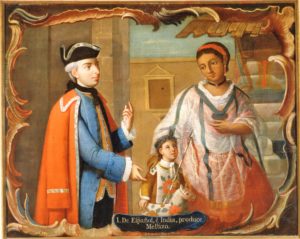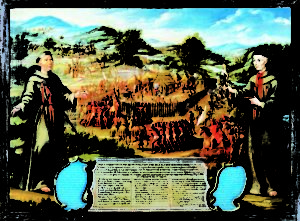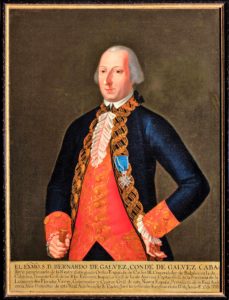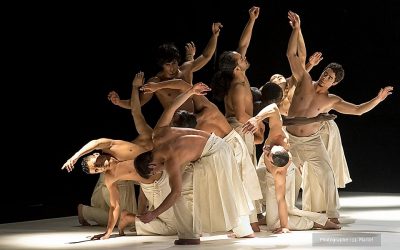The San Antonio Museum of Art has once again brought to us an interesting historical exhibit focusing on the Mesoamerican colonies of the Spanish Empire. Titled “San Antonio 1718: Art from Viceregal Mexico,” the exhibition honors the city’s beginnings as an outpost of the empire through paintings, sculptures, decorative and devotional objects from the 18th century.
It took curator of Latin American Art, Marion Oettinger Jr., five years to put the show together. The 100-plus items on view came from a number of museums, and private collections from Mexico and the U.S., including SAMA’s own pieces and some from the Witte. Among the Mexican museums/collections represented are: Colleccion Museo Franz Mayer, Mexico City; Museo Nacional de Arte, Mexico city; Museo Regional de Queretaro; Museo Nacional de Historia, Mexico City; Colleccion de Banco National de Mexico, Mexico City; Museo de Historia Mexicana, Monterrey., and others. Many of the shown works have never been seen in the U.S. before.

“I wanted to reconstruct life as it might have looked during San Antonio’s first century by using art,” said Oettinger, “but the problem was there was no art from that period in San Antonio. So, I made multiples trips to Mexico to visit private and public collections and museums and see what might be available that would relate to the recorded history of San Antonio.” San Antonio was already an important town and a crossroads in northern New Spain during much of the 18th century.
He found about 1,000 relevant artworks from which he chose the 125 currently on view in the Cowden Gallery and the adjacent Golden Gallery on the museum’s ground floor. The exhibit is divided into three sections named “People and Places,” “The Cycle of Life,” and “The Church.”
The mixing of people and races in the region is vividly documented in the artwork, starting with the image chosen for the cover of the catalog. Painted by Jose de Paez, it shows a white man in formal attire with an indigenous woman and a mestizo child. Fourteen other paintings in the same grouping illustrate the various racial combinations and the children born to them. All individuals are depicted in a respectful and dignified way regardless of their caste, which was what appealed to Oettinger. New Spain had multiple castes, with the Spaniards occupying the top ranks of the social order. The first official San Antonio census also reflected the caste system, he noted.
Portraits of upper-class men and women and family portraits executed in the European style are a big part of the show, but some landscapes and even industrial-scapes, such as silver mines, contribute to the viewer’s understanding of life in New Spain. Particularly moving are paintings of dead children, dressed in finery and adorned with flowers to indicate that they have become “angelitos” explained the curator.
The “Church” part of the exhibition will look pretty familiar to anyone of Christian – and especially of Roman Catholic or Eastern Orthodox – background, with images of the Virgin and Child, chubby little angels, Archangel Michael, saints and Franciscan missionaries who Christianized the native population. An interesting panel depicts the attires of nuns in the new country.
One remarkable work, “Martyrdom of Franciscans at Mission San Saba” is singularly significant because it is the earliest known painting depicting a Texas event, a tragic one that occurred some 130 miles north of San Antonio, where Comanche Indians destroyed the mission and martyred two friars. It’s a complex, detailed work that should take some time to examine. Oettinger is especially proud that he was able to bring it to San Antonio, not once but twice. The canvas belongs to the Museo Nacional de Arte in Mexico City.
In addition to Paez, “Art from Viceregal Mexico” features a few other well-known artists of the time, such as Cristobal de Villalpando and Miguel Cabrera, but many paintings are by unknown artists, which was not unusual back then.
The exhibition will be on view till May 13. Pay a visit! These are the people who helped build the New World that we call home. www.samuseum.org
———————————————————————————————–Images (from the top): De Espanol e India by Jose de Paez; Martyrdom of Franciscans at Mission San Saba by Jose de Paez; Count Bernando de Galvez, artist unknown






